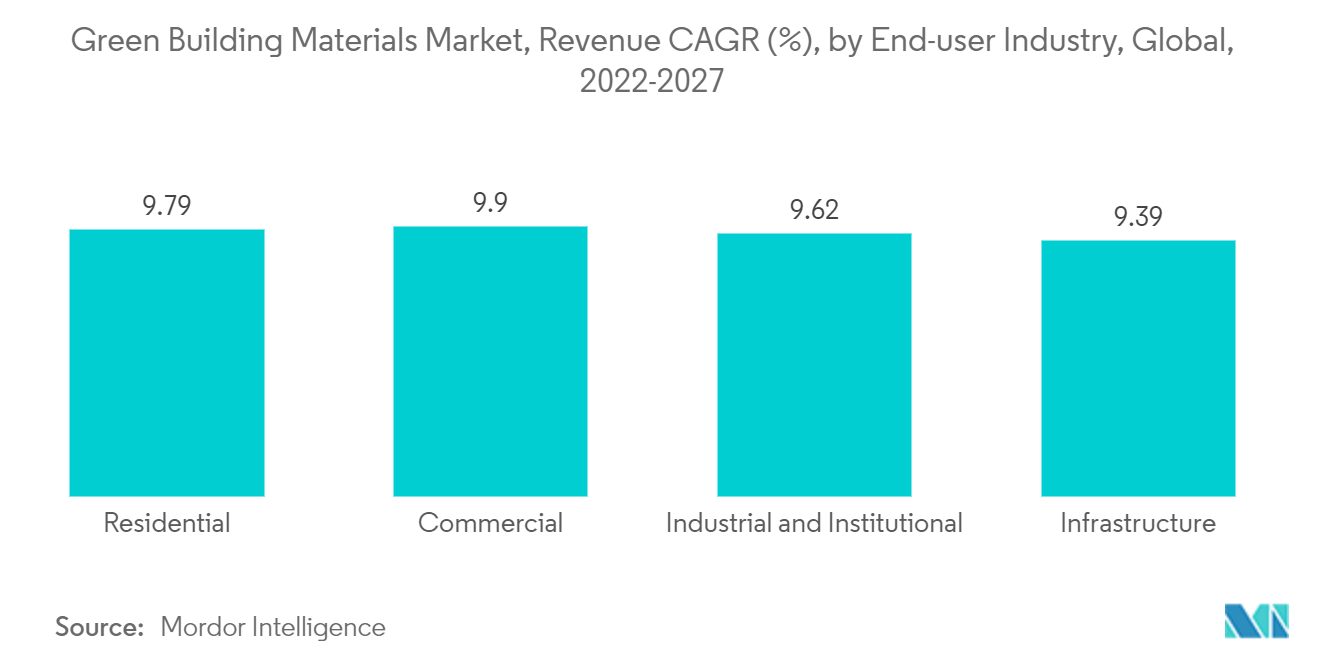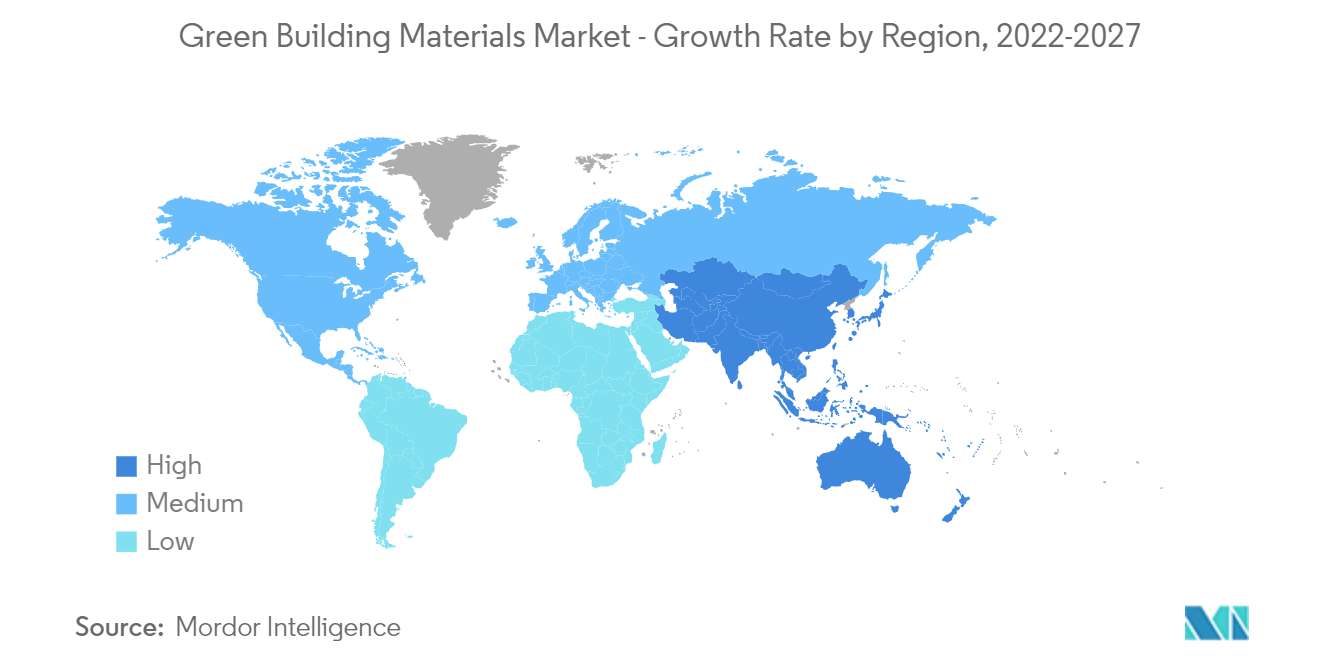Market Trends of Green Building Materials Industry
This section covers the major market trends shaping the Green Building Materials Market according to our research experts:
Increasing Consumption of Green Building Materials in the Residential End-use Industry
- The residential industry is the major end-user industry for green building materials. Various types of green building materials are gaining popularity in residential buildings owing to the increasing preference for materials that are energy-efficient, moisture-resistant, durable, and easy to maintain. Factors like personal safety, increasing awareness and affinity toward green building materials, and government regulations favor the continuous increase in the use of green building materials for residential applications.
- Fiber cement siding, thermally modified wood, bamboo, fly ash or ashcrete, hempcrete, and recycled plastic are some green construction materials that are witnessing increased adoption in the residential construction industry. Other natural materials, like cellulose, hemp, and cork, are used for insulation applications.
- Natural fibers such as cotton, jute, and wool, recycled materials such as terrazzo, and recycled concrete, stucco, stone, and rubber-based materials are also among the green building materials employed in various applications in the residential sector.
- The governments of various countries are providing green housing incentives to promote the construction of green residential projects. For instance, tax credits in the United States and Spain, the Green Mark incentive program in Singapore, and subsidies in New Zealand are promoting the construction of green residential buildings in the country, which is likely to favor the market studied.
- Over the last year, Japan made significant strides in green building leadership and continues to expand its impressive Leadership in Energy and Environmental Design (LEED) portfolio. Japan has more than 268 projects participating in LEED, comprising approximately 29.5 million sq. ft.
- Also, the Kreditanstalt für Wiederaufbau (KfW) program in Germany provides low-interest loans and grants for construction and renovation projects that meet certification ratings beyond code performance.
- China is the world's largest construction market. The Chinese government prioritized the country's 13th Five Year Plan, which has schemes for green building initiatives. The country's national climate commitment calls for 50% of all new buildings constructed by 2020 to be certified green.
- India has around 6,548 registered green building projects. In June 2021, the IIA and the CII-IGBC signed an agreement to boost green building methods in the areas of architectural design and planning.
- Owing to all the above factors, the usage and demand of green building materials for residential construction applications are expected to grow during the forecast period.

North America to Dominate the Market
- In North America, the high level of consumption of green building materials across all types of construction activities is the primary factor driving the growth of the green building materials market.
- The LEED rating system is the most widely used green building rating system in the United States. It provides a framework for healthy, efficient, carbon-saving, and cost-saving green buildings. LEED-certified buildings save money, improve efficiency, and lower carbon emissions.
- According to the USGBC, as of October 2022, the United States had around 20,125 Certified LEED projects, 21,068 Silver projects, 21,206 Gold projects, and 7,027 Platinum projects.
- According to the US Energy Information Administration, the energy consumption by the residential and commercial sectors in 2021 was rounded to 21 quadrillion Btu, which made up 28% of the country's end-use energy consumption. The high energy demand from buildings has drawn the attention of the US government, which has announced its plans to invest USD 3.16 billion to transform around 450,000 homes in low-income areas into energy-efficient structures and cut down on the country's utility bills.
- The Government of Canada has committed to reducing the country's total GHG emissions to 40-45% below 2005 levels by 2030 and to reach net zero by 2050 in order to protect the environment and reduce the impacts of climate change. To achieve such goals, the country's budget for 2022 committed CAD 150 million to develop the Canada Green Buildings Strategy. This strategy will mobilize national action to transform markets and reduce costs to meet this goal.
- According to the WGBC, the best-performing sector for green buildings in Canada is new institutional construction. Currently, over one-third of all new projects in the country are green, and this number is likely to grow significantly in the coming years. Environmental regulations and reduction in energy consumption are the factors driving the growth of the green building industry in Canada.
- According to the USGBC, in 2021, Mexico held the 10th position globally in terms of square feet (sq. ft) of LEED certification, with a value of 10,285,729.57 sq. ft in a total of 47 projects.
- Also, as of December 2021, two Mexican REITs, Fibra Macquarie and Fibra Shop, were in the process of certifying their entire portfolios green through a combination of retrofit investments and higher quality-on-entry standards. Privately-owned Mexican firms are also displaying their commitment to LEED and green building.
- All the above-mentioned factors are likely to fuel the growth of the North American green building materials market over the forecast period.


